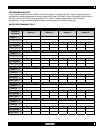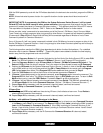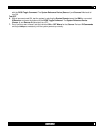
ISM4 INSTALLATION & PROGRAMMING MANUAL
16
OTHER CONNECTIONS
RS232
This Port connects to the RS232 Output on a system control device such as an A/V Receiver, Multi-Zone
Controller, Touch Panel, etc. RS232 Commands input on this port can trigger ISM4 IR output for Source 1 Power
(discrete ON/OFF, toggle ON/OFF), Query Source Power State (all sources) and System Info. This Port is bi-
directional and will automatically send ISM4 System Status Info when any Source state change has occurred
(provided that the Automatic Source Power State Notification feature is enabled) or when queried by the RS232
control device. See Section: RS232 for additional information.
Figure 7 ISM4 RS232 Pinout
1. Using a stereo 3.5mm mini plug, connect the ISM4 RS232 Port to an appropriate RS232 Port on the
system control device to be used for RS232 control. Adapt the stereo mini-plug cable to the control device
port as appropriate (DB-9, RJ45, etc.) Xantech manufactures a Male DB9 to 3.5mm Mini Plug Cable (Xantech
Part No 05913780) configured as shown in Figure 7. Please refer to the control device documentation for the
pinout of that device’s RS232 Port.
EXPANSION
This jack connects to the Source 1 “Sense In” on an Expansion ISM4 for system sync of three additional
devices. When the Source 1 “Sense In” on the Primary ISM4 senses an ON state (Sensor Control Voltage), this
jack outputs 12VDC to the Source 1 “Sense In” on the Expansion ISM4 to indicate the System ON state. The
Source 2-4 devices on the Expansion ISM4 will then sync to the system as programmed (turn ON). When the
Source 1 “Sense In” on the Primary ISM4 senses an OFF state (No Sensor Control Voltage), this jack outputs
0VDC to the Source 1 “Sense In” on the Expansion ISM4 to indicate the System OFF state. The Source 2-4
devices on the Secondary ISM4 will then sync to the system as programmed (turn OFF). Additional ISM4s can
be added as needed increasing the number of ‘managed’ devices by three for each additional ISM4.
NOTE: For Expansion, each ISM4 must be programmed individually for the specific devices connected to each
ISM4. See Section: Programming/Expansion for additional Information.


















